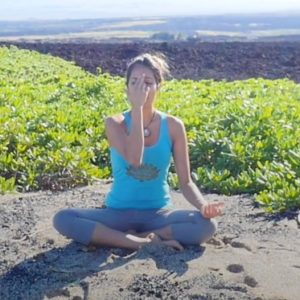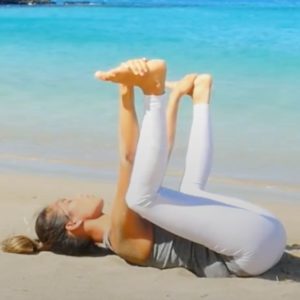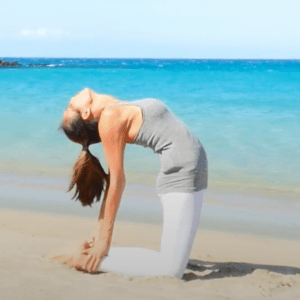Two poses for today are Child’s Pose and Cobra Pose
Child’s Pose and Cobra Pose
Child’s Pose – Balasana
Balasana is the Sanskrit word for Child’s Pose. Although it is a very simple posture, its effects are profound. The gentle forward-folding motion allows one to tap into deep states of relaxation, as it triggers the rest-and-digest mode of our parasympathetic nervous system. This is why Child’s Pose is often used to open a Yoga class, as a resting posture, or to wind down at the end of a sequence. By allowing us to let go of our egoic identifications, Balasana allows us to connect to our inner child, or Heart center: the part of us that is trusting, pure, and authentic.
Steps
- Sit in Vajrasana: Kneel on the ground with bent legs.
Keep the knees close to each other. Form a bowl with the soles of the feet, by bringing the heels beside the buttocks, while still sitting on them. - Straighten the spine, lift the chest, and slowly bend forward with a straight and elongated spine. Relax downward until the forehead touches the ground. The arms are placed in front of the body with bent elbows and forearms resting on the ground. Alternatively, the hands may be placed alongside the legs with palms facing upward.
- Activate the core muscles, inhale, and slowly lift the torso out of the pose.
Benefits
- Gently stretches the hips, thighs, and ankles.
- Tones the pelvic muscles and the sciatic nerves.
- Releases pressure from the spinal discs.
- Regulates the functioning of the adrenal glands.
- Activates Anahata Chakra, the Heart Chakra.
- Calms the brain and helps relieve stress and fatigue.
- It helps to eliminate anger and is very cooling for the brain.
- Soothes the personality, aids in overcoming the egoic identification.
- Getting in touch with the essence of our being – awakens the soul.
Cobra Pose
This asana resembles a serpent with its hood raised.
Steps
- Lie on your stomach with your toes flat on the floor and forehead resting on the ground.
- Keep your legs close together, with your feet and heels lightly touching each other.
- Place your hands (palms downwards) under your shoulders, keeping your elbows parallel and close to your torso.
- Taking a deep breath in, slowly lift your head, chest, and abdomen while keeping your navel on the floor.
- Pull your torso back and off the floor with the support of your hands.
- Checkpoint: Are you putting equal pressure on both the palms?
- Keep breathing with awareness, as you curve your spine vertebra by vertebra. If possible, straighten your arms by arching your back as much as possible; tilt your head back and lookup.
- Checkpoint: Are your shoulders away from your ears? Keep your shoulders relaxed, even if it means bending your elbows. With regular practice, you will be able to deepen the stretch by straightening the elbows.
- Ensure that your feet are still close together. Keep smiling and breathing. Smiling Cobras!
- Don’t overdo the stretch or overstrain yourself.
- Breathing out, gently bring your abdomen, chest, and head back to the floor.
Benefits of the Cobra Pose
- Opens up the shoulders and neck.
- Tones the abdomen.
- Strengthens the entire back and shoulders.
- Improves flexibility of the upper and middle back.
- Expands the chest.
- Improves blood circulation.
- Reduces fatigue and stress.
- Useful for people with respiratory disorders such as asthma. (Do not practice this yoga pose during the attack though).




